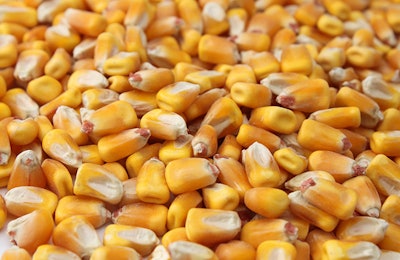
Shortages of corn well into next year are being forecast in Kenya as the result of an adverse combination of factors in East Africa.
Stocks are expected to become increasingly tight as the result of limited supplies in Uganda, and a ban is expected shortly on exports from Tanzania, reports Business Daily.
In Kenya and Uganda, harvests have been hit by a delay in the onset of the rains that were due in March, according to a market analysis by the Eastern Africa Grain Council. Usually reliable supplier, Tanzania, looks likely to trade its surplus with its southern neighbors, Malawi and Mozambique.
These conditions exacerbate an already challenging corn supply situation in Kenya, where the price of corn flour is already high and looks likely to rise further, although Agriculture Secretary Hamida Boga predicts that imports will lead to a stabilization of prices.
With the dry conditions in Kenya, farmers have switched from planting corn to other crops such as wheat, pulses and fodder. Just 1.5 million hectares (3.7 million acres) of corn are estimated to have been planted this year, down from 2.4 million hectares 12 months ago.
To ease the corn supply situation and curb rising flour costs, the Kenyan government has recently released two million bags (180,000 metric tons, mt) of corn from the state’s Strategic Food Reserve instead of importing additional supplies, reported The Standard.
The shortage of corn supplies are being blamed for a reduction in the quality of animal feeds, reported The Star this month. An official at the Association of Kenya Feed Manufacturers said that the success of the country’s livestock sector is dependent on high-quality and affordable feed, and shortages of corn mean that mills are running at below capacity.
A shortage of corn in Kenya was already reported to be pushing up livestock feed prices in April of this year.
In the first quarter of this year, the U.S. Department of Agriculture's (USDA) Foreign Agricultural Service (FAS) was forecasting a surge in Kenyan imports of corn, wheat and rice as domestic production was expected to be down while local demand continues to increase.
For corn, FAS was forecasting imports of 1 million metric tons for the marketing year starting July 2019 compared with 700,000 metric tons for the previous 12 months. Of the country’s total corn consumption of around 4.65 million metric tons, FAS estimates that 450,000 metric tons is used for animal feeds in Kenya.
While Kenyan corn production had recovered from the drought in 2016-17, growers’ morale had been hit by Kenyan government decisions in 2018-19 to halve the budget allocation for the Strategic Food Reserve so that it covered just two million bags of corn, and to delay the import of subsidized fertilizers.
















